Table of Contents
Overview – Neurobiology of Memories
The neurobiology of memories is a highly coordinated process involving the encoding, storage, and retrieval of information across various brain regions. It is influenced by neurotransmitters like acetylcholine and dopamine, modulated by emotional and cognitive factors, and underpinned by synaptic plasticity mechanisms such as long-term potentiation (LTP) and depression (LTD). A deep understanding of memory formation is essential for clinical neurology, psychiatry, and cognitive neuroscience.
Memory Formation Pathway
- External Stimuli
- Sensory input reaches the cerebral cortex.
- Temporary Storage (Cerebral Cortex)
- Evaluates and sorts inputs.
- Focused attention determines what moves to short-term memory.
- Short-Term Memory (STM)
- Located in the medial temporal lobe (hippocampus, amygdala, cortical areas).
- Emotion, rehearsal, association → transfer to LTM.
- Unprocessed input is forgotten.
- Long-Term Memory (LTM)
- Requires ACh (declarative) or dopamine (non-declarative).
- Declarative → stored in prefrontal cortex
- Non-declarative → stored in premotor cortex

Short-Term & Working Memory
Short-Term Memory
- Based in hippocampus
- Rapid, transient neuronal changes (no protein synthesis)
- Linked to cortex via sensory inputs (visual, auditory, olfactory, gustatory)
- Lasts seconds to hours (~7–8 chunks)
- Vulnerable to disruption (e.g. amnesia from hippocampal damage)
Working Memory
- Supports temporary retention, integration, and manipulation
- Crucial for moment-to-moment decisions (e.g. crossing the road)
- Based in prefrontal cortex
- Heavily modulated by dopamine
Long-Term Memory
- Also rooted in the hippocampus
- Capacity is effectively limitless
- Generally requires STM input
- Can bypass STM by linking to pre-existing LTM
- Influenced by:
- Genetics, age, trauma, malnutrition
- Rehearsal, emotion, association, perceived importance
- Requires synaptic remodelling via:
- Long-Term Potentiation (LTP)
- Long-Term Depression (LTD)
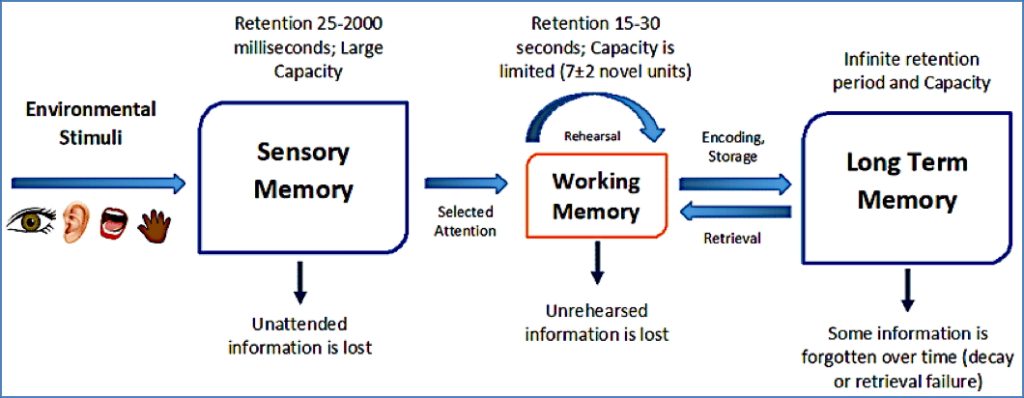
Long-Term Potentiation (LTP)
Definition
- Long-lasting increase in synaptic strength via repeated stimulation
Mechanism
- NMDA receptor-mediated Ca²⁺ influx → activates enzymes
- Results in:
- ↑ neurotransmitter release
- ↑ receptor sensitivity/number
- Gene activation and protein synthesis (via CREB)
Key Players
- Glutamate → binds NMDA & AMPA receptors
- AMPA: Ligand-gated Na⁺ channel → depolarisation
- NMDA: Ligand + voltage-gated Ca²⁺ channel (requires Mg²⁺ removal)
Phases of LTP
- Induction: AP alleviates NMDA Mg²⁺ block
- Expression: Protein modifications → stronger synapse
- Maintenance: CREB-driven transcription → long-term protein synthesis
Long-Term Depression (LTD)
Definition
- Long-term synaptic weakening via reduced post-synaptic response
Mechanism
- NMDA-mediated Ca²⁺ influx → activates phosphatases
- Leads to AMPA dephosphorylation
- Internalisation of AMPA receptors
Functions
- Hippocampus: Reset LTP’d synapses for new memories
- Cerebellum: Promotes motor learning
- Overall: Prevents overload of memory circuits
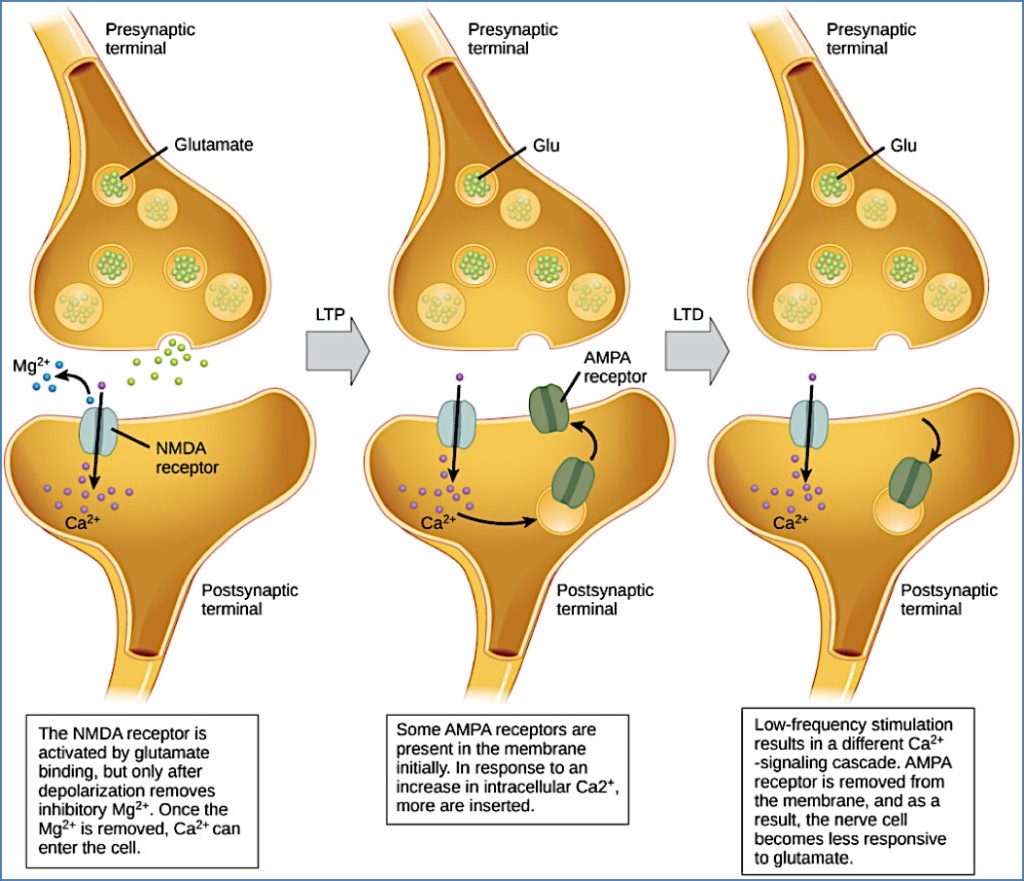
Memory Types
Declarative (Explicit) Memory
- “What” you learn – facts, ideas, events
- Brain regions:
- Hippocampus
- Medial temporal lobe
- Cerebral cortex
- Thalamus, hypothalamus
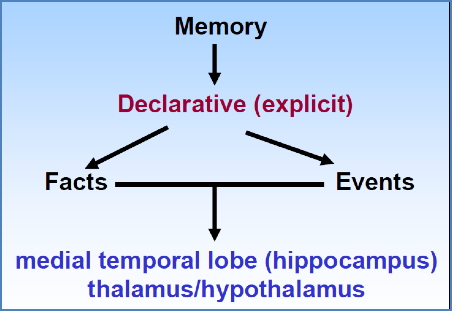
Non-Declarative (Implicit) Memory
- “How” you learn – procedures, habits, conditioned responses
- Subtypes:
- Procedural: e.g. walking, driving, algebra
- Priming: memory triggered by cues
- Classically conditioned: emotional or motor associations
- Non-associative: isolated reflexive events
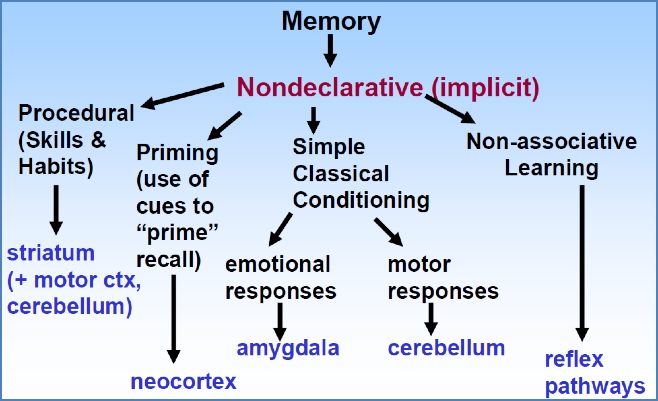
Declarative Memory Circuit
- Sensory Input → Spinal cord → Medulla → Somatosensory cortex
- Somatosensory Cortex: Filters & focuses attention
- Medial Temporal Lobe:
- Memory consolidation & retrieval
- Interacts with thalamus and prefrontal cortex
- Basal Forebrain:
- Releases acetylcholine → primes hippocampus for LTP
- (↓ACh = impaired memory in Alzheimer’s)
- Feedback Loops: Retrieve stored memory via association cortices
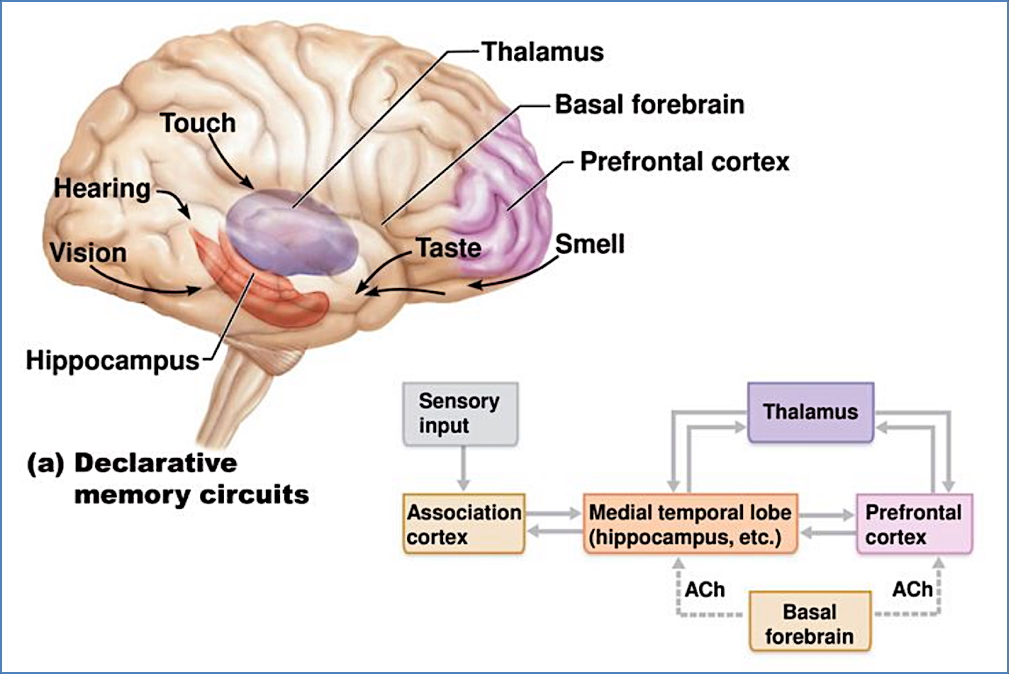
Non-Declarative Memory Circuit
- Sensory & Motor Input → Brain via medulla
- Association Cortices: Relay to basal nuclei
- Basal Nuclei → Thalamus → Premotor Cortex
- Substantia Nigra:
- Releases dopamine → primes basal ganglia
- (↓Dopamine = impaired procedural memory in Parkinson’s)
- Premotor Cortex: Plans and executes learned behaviours
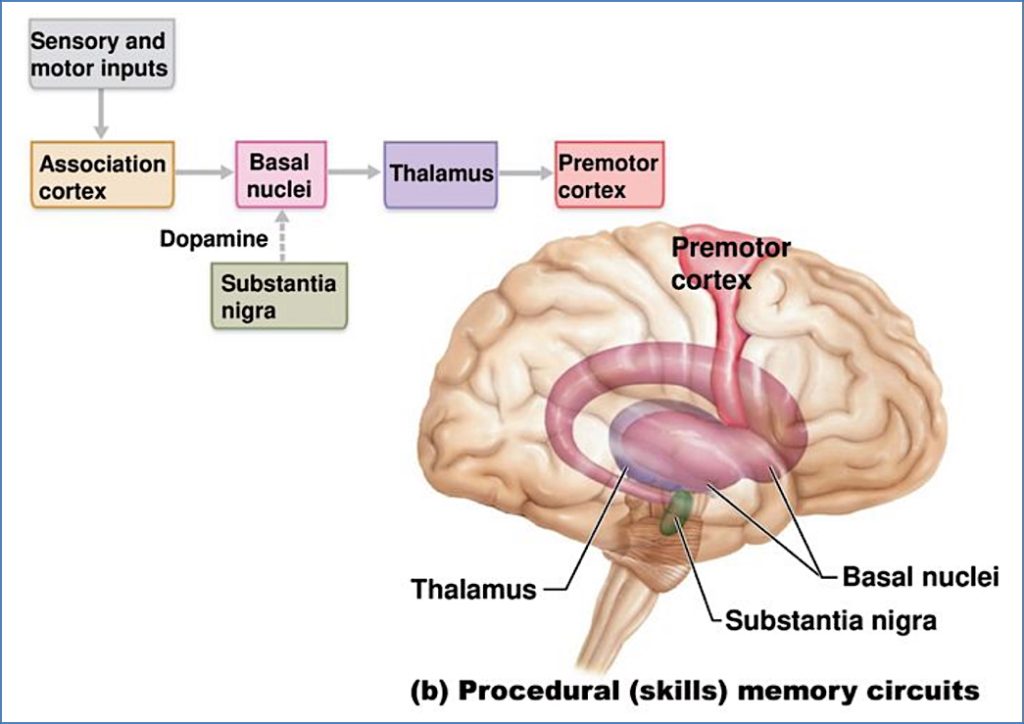
Summary – Neurobiology of Memories
The neurobiology of memories involves multiple interconnected brain regions, modulated by neurotransmitters such as acetylcholine and dopamine. From short-term encoding to long-term consolidation, processes like LTP and LTD enable learning and adaptation. Declarative and non-declarative memory circuits serve distinct functions in cognition and behaviour. For a broader context, see our Nervous System Overview page.